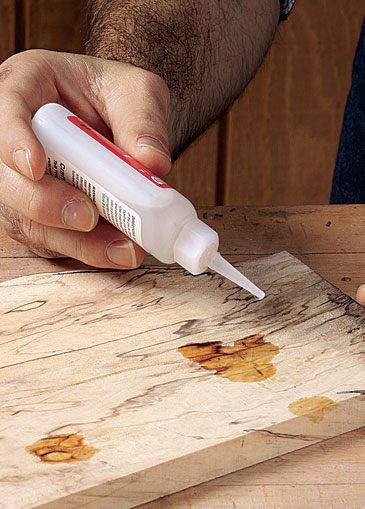Q:
I really like the look of spalted wood. Are there any workability issues or risks I should know about before diving in?
Turk Sobek, Sheridan, WY
A:
Spalted lumber can add a dramatic touch to your furniture, but there are a couple of issues to keep in mind. The fungi that contribute to the wood’s striking color can also lead to rot. So it’s common to run across soft or punky patches in an otherwise usable board. When that happens, you can fortify the soft areas with cyanoacrylate glue. The softer areas also soak up more finish than other areas, creating dark, blotchy patches. As a remedy, I seal spalted boards with a washcoat of shellac before continuing my finishing routine.
Some people warn of the health risks associated with working spalted wood, but expert Seri Robinson (“Spalted Wood“, FWW #199), says that the spores represent no more risk to healthy adults than normal sawdust (but it’s a good idea to wear a dust mask anyway). However, they do advise people with immune system disorders to avoid spalted wood. By the way, Robinson’s article tells you how to save money by spalting your own lumber.

Strengthen the weak spots. Soak any rotted spots with cyanoacrylate glue. This stiffens the wood fibers, allowing you to work the wood as usual.staff

Prevent splotchy finishes. The spalted areas can absorb more finish than the non-spalted areas. A thin coat of shellac seals the wood and evens out the amount of finish absorbed.staff
Fine Woodworking Recommended Products

AnchorSeal Log and Lumber End-Grain Sealer

Ridgid R4331 Planer

DeWalt 735X Planer






















Comments
In the 80s we were able to buy spalted maple for 50 to75 cents a board foot because nobody wanted it, now you pay a premium for it, go figure!
Log in or create an account to post a comment.
Sign up Log in